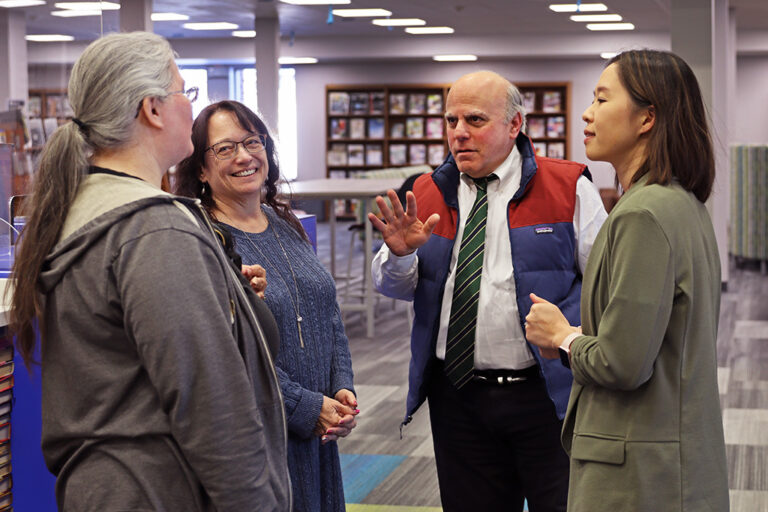From the Dean: Envisioning 2035 in higher education
Earlier this week I attended a meeting of the North Dakota University System (NDUS) that included members from the State Board of Higher Education (SBHE). The theme of the meeting was to review the final reports of the nine groups that have been working on strategic planning related to the various missions and activities of the institutions of higher learning in the state that make up the NDUS. As you undoubtedly know, there are 11 different colleges and universities in the system, with our School of Medicine & Health Sciences (SMHS) grouped under UND – but with its own line item in the NDUS budget. The strategic plan is called Envision 2035. As I’ve mentioned before, I co-chair the group working on healthcare education along with SBHE member Dr. Casey Ryan and Dr. Pamela Jo Johnson who chairs the Department of Public Health at North Dakota State University and is the Mary J. Berg Distinguished Professor of Women’s Health. Each of the nine workgroups focused on a specific area of education, specifically energy, agriculture, digitization/artificial intelligence, infrastructure, students, teachers, values, human capital – and of course healthcare.
When a member from each working group presented at the meeting, they were asked to identify the three critical issues that require immediate attention in their assigned area. From our list of various action items (please see this slide deck that outlines our findings), we identified the following three critical issues: 1) the need to expand simulation opportunities throughout the system (including the need to fund outreach efforts through the Nursing Consortium as well as Simulation in Motion – North Dakota (SIM-ND) through the SMHS); 2) substantially expand efforts related to digital data and artificial intelligence (AI); and 3) find additional financial support to support student and faculty.
The final conclusions and rollout of Envision 2035 aren’t known yet, since the SBHE has more work to do to integrate the recommendations of the nine work groups. However, at the end of the meeting this week, eight critical issues for action were identified from the various recommendations of the nine work groups. Fortunately, all three of the high priority items that our healthcare group identified were among the eight critical items identified for the entire system – namely, support for an expanded simulation experience through the nursing consortium and the School, support for a major expansion of activity related to AI, and more financial support to optimize the student experience (including efforts to reduce the cost of education for students), as well as support for faculty recruitment and retention.
At the conclusion of the meeting, it appeared to me that the Envision 2035 process is on track to provide a strategic path forward, albeit with many uncertainties as we look more than a decade ahead to 2035. But it seems clear to me that the priorities identified by our healthcare group – simulation, AI, and support for our people (students, faculty, and staff) – are certain to be important issues going forward to the year 2035 (and beyond), come what may.
We will see what the final report looks like, but from what I saw and heard this week, the NDUS is developing an excellent and powerful blueprint for the future. I’m looking forward to seeing the final report, but judging from the continuing success of the UND LEADS Strategic Plan, the future looks bright for Envision 2035.
Joshua Wynne, MD, MBA, MPH
Vice President for Health Affairs, UND
Dean, UND School of Medicine & Health Sciences


